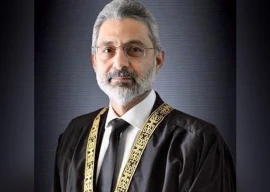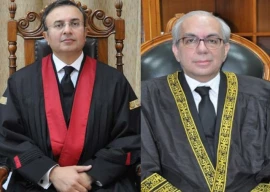
When Gamay Shah and Mai Aghia started their journey of tears for the first time over 200 years ago, people laughed at them. Now it is one of the biggest Ashura processions in South Asia.
A lot in this city has changed since then, but the route of this procession remains the same: it starts at Nisar Haveli on Muharram 9, and moves through Mubarak Haveli, Mohalla Chehl Bibian, Imambargah Syed Wajid Ali Shah, Chowk Nawab Sahib, Koocha Qazi Khana, Imambargah Maulvi Feroz Ali, Koocha Miskeenan, Mohalla Peer Gillanian, Imambargah Syed Rajab Ali Shah, Chauhatta Mufti Baqir, Chowk Kotwali, Kashmiri Bazaar, Sonehri Masjid, Dabbi Bazaar, Gumti Bazaar (Rang Mahal Chowk), Said Mittha Bazaar, Tehsil Bazaar, Bazaar Hakimaan, Ucchi Masjid and Bhaati Chowk, concluding at Karbala Gamay Shah, the final resting place of Syed Ghulam Ali Shah, on the eve of Muharram 10. Various small processions join the main procession along the way.
The imambargah at Karbla Gamay Shah, which was a place of meditation for Shah, was built by Nawab Muzaffar Ali Khan of the Qazalbash family when they came to Lahore after Partition.
Agha Jan Ali Khan Qazalbash, Nawab Muzaffar’s grandson and caretaker of Gamay Shah, said that Shia devotees from across the city came to Gamay Shah with the main procession.
“The route of the procession hasn’t changed in 200 years,” he said. Baqir Ali, an elderly resident of Mochi Gate, said that before Partition, the Sikhs and Hindus of Lahore would set up sabeels, stalls for free water or other drinks, along the route of the procession. “These days our Sunni brothers do the same,” he said.
Ali said that Gamay Shah was a very pious man known for his incessant mourning for the descendants of the Holy Prophet Muhammad (pbuh). When Gamay Shah’s procession grew bigger, Punjab’s ruler Mahraja Ranjit Singh arrested Shah and imprisoned him. After Gamay Shah’s arrest, Singh had nightmares and early in the morning went to see Shah in jail.
According to Ali, Shah smiled at him and said that the procession was meant to demonstrate their sorrow over the martyrdom of the Holy Prophet’s (pbuh) descendants. Singh released Shah and used to visit him afterwards.
According to the police, some 100 processions are taken out in Lahore on Ashura and many of them end at Karbla Gamay Shah. It is also the final destination of other processions: a chehlum procession starting at Haveli Alif Shaheeyan on Safar 20 that marks forty days since the date of Hazrat Imam Hussain’s (RA) martyrdom; a procession on Rabiul Awal 8 that originates from an imambargah in Islampura; and another on Ramazan 21 for the martyrdom of Hazrat Ali (RA) which starts at Mubarak Haveli.
Published in The Express Tribune, December 17th, 2010.

1725931661-0/Katy-(1)1725931661-0-165x106.webp)


1725611110-0/Tribune-Pic-(7)1725611110-0-165x106.webp)







1725859023-0/Untitled-design-(38)1725859023-0-270x192.webp)

1723104747-0/PIA123-(1)1723104747-0-270x192.webp)








COMMENTS
Comments are moderated and generally will be posted if they are on-topic and not abusive.
For more information, please see our Comments FAQ